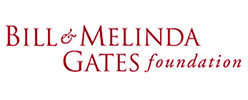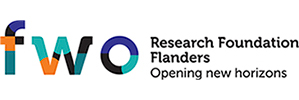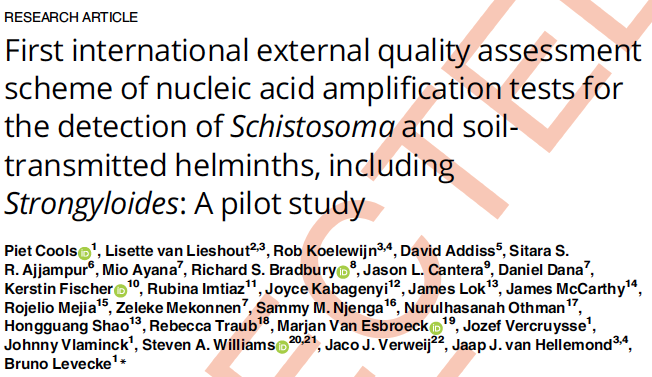
<p>In close collaboration with the Dutch Foundation for Quality Assessment in Medical Laboratories in Nijmegen (The Netherlands), the Starworms team has organized and piloted the first international external quality assessment scheme of nucleic acid amplification tests (NAATs) for the detection of <em>Schistosoma</em> and soiltransmitted helminths (including <em>Strongyloides</em>).</p>
<p>This pilot study aimed to:</p>
<ol>
<li>assess the feasibility of designing and delivering a technically and logistically challenging EQAS for the detection of Schistosoma and STHs, including Strongyloides in both preserved stool and DNA samples</li>
<li>evaluate and compare the diagnostic performance of laboratories, and</li>
<li>to gain insights in the diversity of the different NAAT protocols used</li>
</ol>
<p>In order to do so, a panel of 12 validated stool samples and 8 DNA samples were distributed among participating laboratories across the globe, after which laboratories performed their respective in-house DNA extraction and NAAT protocols. Later, they reported the test results and completed a questionnair on their methodology. Finally, all results were analyzed and feedback on diagnostic performance was provided. </p>
<p>The results revealed that although most laboratories performed well, there were clearly some laboratories that may need to improve their test protocol. It was also noteworthy that nearly all laboratores were applying a different protocol for their respective NAAT, highlighting a highly fragmented diagnostic landscape in need of some standardization. Further research should aim to verify whether this has an impact on the performance of the diagnostic outcomes.</p>
<p>From today onwards, SKML plans to provide a HEMQAS open to laboratories from all over the world. (<a href="https://www.skml.nl/en/rondzendingen/overzicht/rondzending?id=231" target="_blank">more info</a>)</p>
<p>You can now read the uncorrected Proof of the manuscript <a href="/src/Frontend/Files/userfiles/files/pntd_0008231.pdf" target="_blank">HERE</a>!</p>
 <p>In close collaboration with the Dutch Foundation for Quality Assessment in Medical Laboratories in Nijmegen (The Netherlands), the Starworms team has organized and piloted the first international external quality assessment scheme of nucleic acid amplification tests (NAATs) for the detection of <em>Schistosoma</em> and soiltransmitted helminths (including <em>Strongyloides</em>).</p>
<p>This pilot study aimed to:</p>
<ol>
<li>assess the feasibility of designing and delivering a technically and logistically challenging EQAS for the detection of Schistosoma and STHs, including Strongyloides in both preserved stool and DNA samples</li>
<li>evaluate and compare the diagnostic performance of laboratories, and</li>
<li>to gain insights in the diversity of the different NAAT protocols used</li>
</ol>
<p>In order to do so, a panel of 12 validated stool samples and 8 DNA samples were distributed among participating laboratories across the globe, after which laboratories performed their respective in-house DNA extraction and NAAT protocols. Later, they reported the test results and completed a questionnair on their methodology. Finally, all results were analyzed and feedback on diagnostic performance was provided. </p>
<p>The results revealed that although most laboratories performed well, there were clearly some laboratories that may need to improve their test protocol. It was also noteworthy that nearly all laboratores were applying a different protocol for their respective NAAT, highlighting a highly fragmented diagnostic landscape in need of some standardization. Further research should aim to verify whether this has an impact on the performance of the diagnostic outcomes.</p>
<p>From today onwards, SKML plans to provide a HEMQAS open to laboratories from all over the world. (<a href="https://www.skml.nl/en/rondzendingen/overzicht/rondzending?id=231" target="_blank">more info</a>)</p>
<p>You can now read the uncorrected Proof of the manuscript <a href="/src/Frontend/Files/userfiles/files/pntd_0008231.pdf" target="_blank">HERE</a>!</p>
<p>In close collaboration with the Dutch Foundation for Quality Assessment in Medical Laboratories in Nijmegen (The Netherlands), the Starworms team has organized and piloted the first international external quality assessment scheme of nucleic acid amplification tests (NAATs) for the detection of <em>Schistosoma</em> and soiltransmitted helminths (including <em>Strongyloides</em>).</p>
<p>This pilot study aimed to:</p>
<ol>
<li>assess the feasibility of designing and delivering a technically and logistically challenging EQAS for the detection of Schistosoma and STHs, including Strongyloides in both preserved stool and DNA samples</li>
<li>evaluate and compare the diagnostic performance of laboratories, and</li>
<li>to gain insights in the diversity of the different NAAT protocols used</li>
</ol>
<p>In order to do so, a panel of 12 validated stool samples and 8 DNA samples were distributed among participating laboratories across the globe, after which laboratories performed their respective in-house DNA extraction and NAAT protocols. Later, they reported the test results and completed a questionnair on their methodology. Finally, all results were analyzed and feedback on diagnostic performance was provided. </p>
<p>The results revealed that although most laboratories performed well, there were clearly some laboratories that may need to improve their test protocol. It was also noteworthy that nearly all laboratores were applying a different protocol for their respective NAAT, highlighting a highly fragmented diagnostic landscape in need of some standardization. Further research should aim to verify whether this has an impact on the performance of the diagnostic outcomes.</p>
<p>From today onwards, SKML plans to provide a HEMQAS open to laboratories from all over the world. (<a href="https://www.skml.nl/en/rondzendingen/overzicht/rondzending?id=231" target="_blank">more info</a>)</p>
<p>You can now read the uncorrected Proof of the manuscript <a href="/src/Frontend/Files/userfiles/files/pntd_0008231.pdf" target="_blank">HERE</a>!</p>

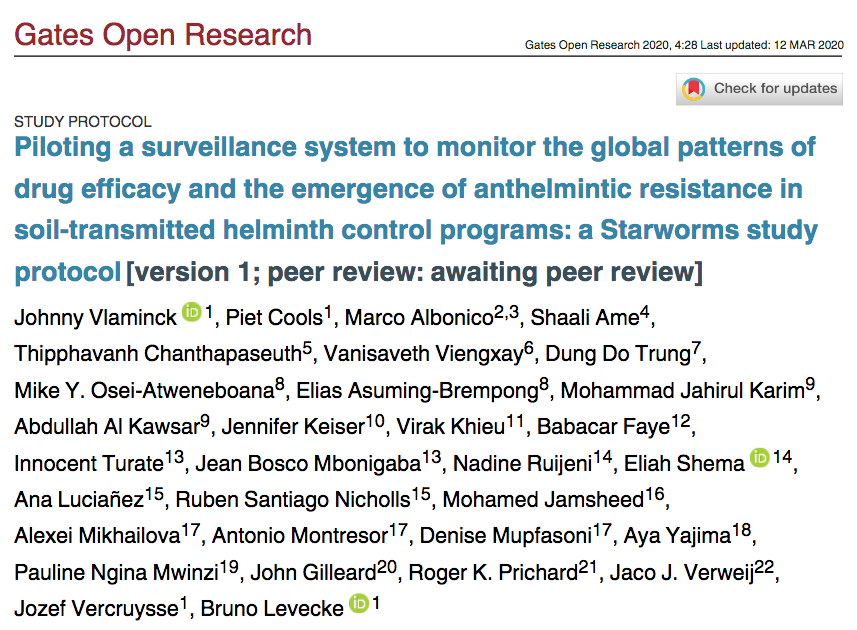 <p>The Starworms consortium has recently published the <a href="/src/Frontend/Files/userfiles/files/2020_Vlaminck%20et%20al.pdf" target="_blank">study protocol</a> for eight drug efficacy trials that will be performed in the near future as part of the second work-package of the Starworms project.</p>
<p>The main objective of the project is to pilot a surveillance system to assess anthelmintic drug efficacy and the emergence of anthelmintic resistance in eight countries were preventive chemotherapy (PC) coverage has been high for at least five years.</p>
<p>It is expected that the results will provide important information on (i) the current STH prevalence and intensity of infections after multiple rounds of intense PC; (ii) global patters of efficacy of benzimidazole drug administered in the control program and (iii) the presence of genetic markers associated with benzimidazole drug resistance. Besides the research findings, this study will also form an important resource for countries that want to establish their own surveillance system and for future research on the molecular detection of AR.</p>
<p>This detailed description of the study rationale, study methods and plan of analysis presented in this manuscript are thought to form a valuable reference document for when study results are published in the future. What’s more, we also included a substantial amount of additional information, comprising detailed Standard Operating Procedures, summarized study protocols and informed consent forms in different languages (English, French and Spanish) to expand the scope of possible users. We therefore believe that the current protocol is of important interest for the whole community involved in monitoring the global STH status.</p>
<p>Happy reading from the Starworms team!</p>
<p><a href="/src/Frontend/Files/userfiles/files/2020_Vlaminck%20et%20al.pdf" target="_blank">PDF of Protocol Paper</a></p>
<p>The Starworms consortium has recently published the <a href="/src/Frontend/Files/userfiles/files/2020_Vlaminck%20et%20al.pdf" target="_blank">study protocol</a> for eight drug efficacy trials that will be performed in the near future as part of the second work-package of the Starworms project.</p>
<p>The main objective of the project is to pilot a surveillance system to assess anthelmintic drug efficacy and the emergence of anthelmintic resistance in eight countries were preventive chemotherapy (PC) coverage has been high for at least five years.</p>
<p>It is expected that the results will provide important information on (i) the current STH prevalence and intensity of infections after multiple rounds of intense PC; (ii) global patters of efficacy of benzimidazole drug administered in the control program and (iii) the presence of genetic markers associated with benzimidazole drug resistance. Besides the research findings, this study will also form an important resource for countries that want to establish their own surveillance system and for future research on the molecular detection of AR.</p>
<p>This detailed description of the study rationale, study methods and plan of analysis presented in this manuscript are thought to form a valuable reference document for when study results are published in the future. What’s more, we also included a substantial amount of additional information, comprising detailed Standard Operating Procedures, summarized study protocols and informed consent forms in different languages (English, French and Spanish) to expand the scope of possible users. We therefore believe that the current protocol is of important interest for the whole community involved in monitoring the global STH status.</p>
<p>Happy reading from the Starworms team!</p>
<p><a href="/src/Frontend/Files/userfiles/files/2020_Vlaminck%20et%20al.pdf" target="_blank">PDF of Protocol Paper</a></p>
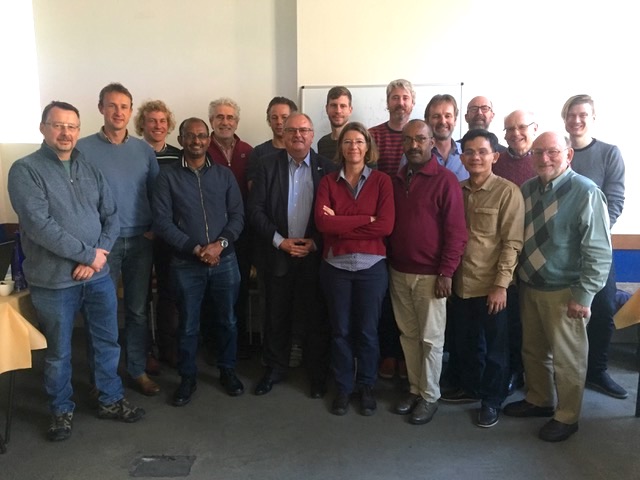 <p>The first week of November 2019, the Starworms team met with collaborators to discuss the progress on the work regarding anthelmintic resistance. The Ghent-based meeting lasted for 1.5 days and the aims of the meeting were to:</p>
<ul>
<li>Provide an overview of the different investments of the Bill & Melinda Gates Foundation to monitor / delay anthelmintic resistance</li>
<li>Present and discuss the results on the diagnostic performance of molecular tools to assess single nucleotide polymorphisms in the beta-tubulin gene of human soil-transmitted helminths</li>
<li>Present and discuss the current evidence of single nucleotide polymorphisms in the beta-tubulin gene in human soil-transmitted helminths</li>
<li>Provide an update on the efficacy of drugs in countries where control programs reached high coverage for long time of period</li>
<li>Work out an action plan for the analysis of the worms collected during the expulsion studies in Pemba Island (Tanzania) and Jimma Town (Ethiopia)</li>
</ul>
<p>The Starworms team wishes to thank all participants of the meeting for the fruitful discussions and looks forward to a continued collaboration.</p>
<p><img alt="" src="/src/Frontend/Files/userfiles/images/Group_pic.jpeg" style="width: 600px; height: 450px;" /></p>
<p>The first week of November 2019, the Starworms team met with collaborators to discuss the progress on the work regarding anthelmintic resistance. The Ghent-based meeting lasted for 1.5 days and the aims of the meeting were to:</p>
<ul>
<li>Provide an overview of the different investments of the Bill & Melinda Gates Foundation to monitor / delay anthelmintic resistance</li>
<li>Present and discuss the results on the diagnostic performance of molecular tools to assess single nucleotide polymorphisms in the beta-tubulin gene of human soil-transmitted helminths</li>
<li>Present and discuss the current evidence of single nucleotide polymorphisms in the beta-tubulin gene in human soil-transmitted helminths</li>
<li>Provide an update on the efficacy of drugs in countries where control programs reached high coverage for long time of period</li>
<li>Work out an action plan for the analysis of the worms collected during the expulsion studies in Pemba Island (Tanzania) and Jimma Town (Ethiopia)</li>
</ul>
<p>The Starworms team wishes to thank all participants of the meeting for the fruitful discussions and looks forward to a continued collaboration.</p>
<p><img alt="" src="/src/Frontend/Files/userfiles/images/Group_pic.jpeg" style="width: 600px; height: 450px;" /></p>
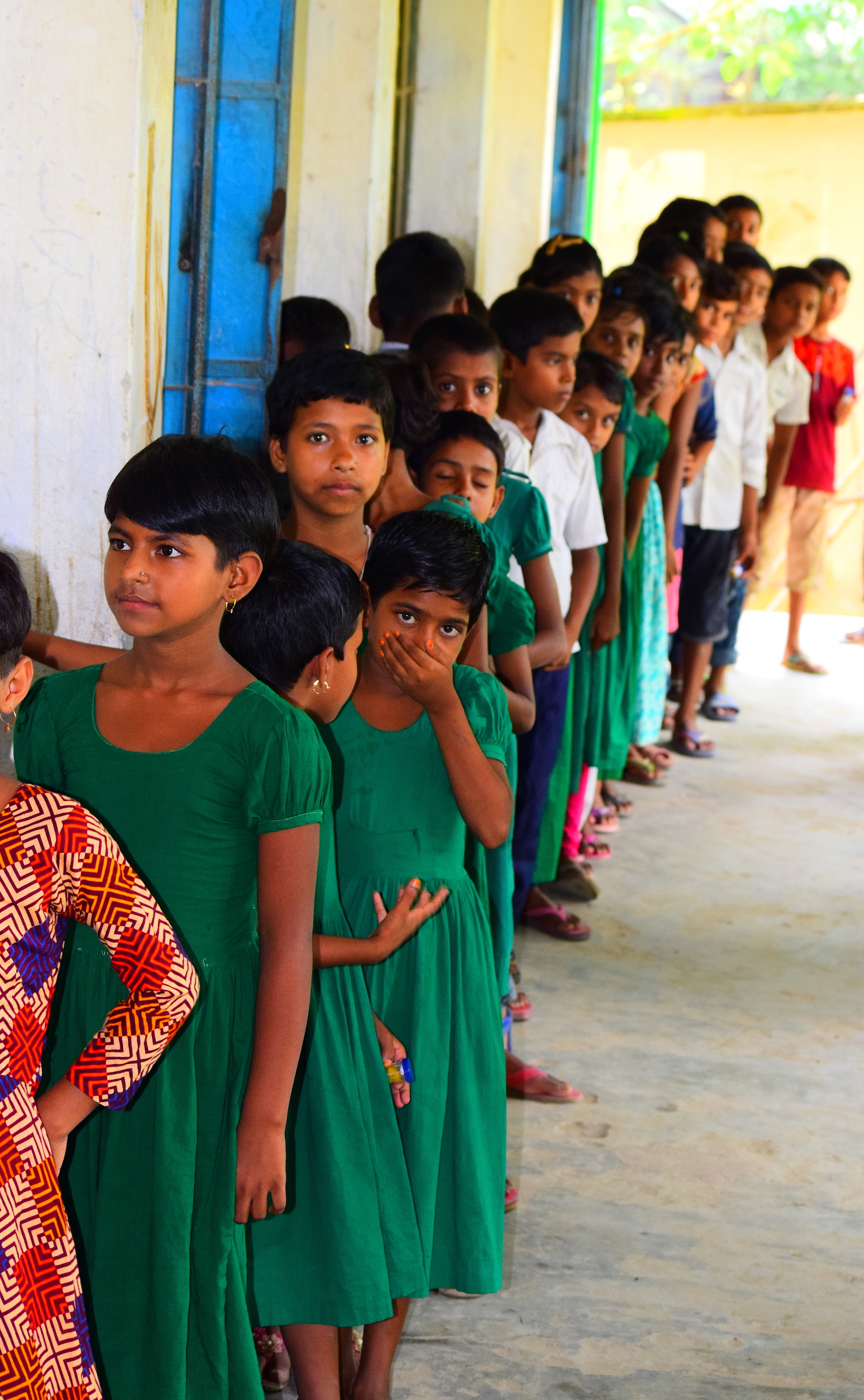 <p>When it comes to the implementation of mass drugs administration in school-aged children (SAC) to combat soil-transmitted helminths (STHs), Bangladesh has been on the front of the pack. The children of Bangladesh used to suffer significantly from the high numbers of intestinal worms living in their guts. However, since 2008, the country’s control program has been distributing anti-worm drugs twice yearly to the many schools across the country. They were successful in severely reducing the prevalence and intensity of these infections in nearly all districts of the country, reaching prevalence of any STH often far below 5%. However; during a survey in 2017 in the district of Sirajganj, about 130km NorthWest of the Capital Dhaka, some schools showed to have an <em>Ascaris</em> prevalence of approximately 24%, far above the country average.</p>
<p>Given the many historic treatments with reported coverage of >90%, this district was of interest to evaluate the efficacy of the drugs used in the program. To do so, we planned a drug efficacy trial in the local schools of Sirajganj district.</p>
<p>The trial started on the 7th of September 2019. The field team (<strong>Pic 1</strong>) is evaluating the prevalence and intensity of STH infection in SAC in a dozen schools using duplicate Kato-Katz. Afterwards; all children receive a single dose of 500mg of Mebendazole as treatment (<strong>Pic 2</strong>). Fourteen to 21 days later; the children that were positive for any STH will be re-examined to be able to calculate the egg-reduction rate and evaluate the efficacy of the drugs.</p>
<p><img alt="" src="/src/Frontend/Files/userfiles/images/Bangla_groupPic.jpeg" style="width: 750px; height: 642px;" /></p>
<p><img alt="" src="/src/Frontend/Files/userfiles/images/Bangla_pic.JPG" style="width: 750px; height: 564px;" /></p>
<p>We are looking forward to receive the findings of this study somewhere in the beginning of October. Right before the second deworming round of the year will take place in the thousands of little schools across this rapidly developing country.</p>
<p>When it comes to the implementation of mass drugs administration in school-aged children (SAC) to combat soil-transmitted helminths (STHs), Bangladesh has been on the front of the pack. The children of Bangladesh used to suffer significantly from the high numbers of intestinal worms living in their guts. However, since 2008, the country’s control program has been distributing anti-worm drugs twice yearly to the many schools across the country. They were successful in severely reducing the prevalence and intensity of these infections in nearly all districts of the country, reaching prevalence of any STH often far below 5%. However; during a survey in 2017 in the district of Sirajganj, about 130km NorthWest of the Capital Dhaka, some schools showed to have an <em>Ascaris</em> prevalence of approximately 24%, far above the country average.</p>
<p>Given the many historic treatments with reported coverage of >90%, this district was of interest to evaluate the efficacy of the drugs used in the program. To do so, we planned a drug efficacy trial in the local schools of Sirajganj district.</p>
<p>The trial started on the 7th of September 2019. The field team (<strong>Pic 1</strong>) is evaluating the prevalence and intensity of STH infection in SAC in a dozen schools using duplicate Kato-Katz. Afterwards; all children receive a single dose of 500mg of Mebendazole as treatment (<strong>Pic 2</strong>). Fourteen to 21 days later; the children that were positive for any STH will be re-examined to be able to calculate the egg-reduction rate and evaluate the efficacy of the drugs.</p>
<p><img alt="" src="/src/Frontend/Files/userfiles/images/Bangla_groupPic.jpeg" style="width: 750px; height: 642px;" /></p>
<p><img alt="" src="/src/Frontend/Files/userfiles/images/Bangla_pic.JPG" style="width: 750px; height: 564px;" /></p>
<p>We are looking forward to receive the findings of this study somewhere in the beginning of October. Right before the second deworming round of the year will take place in the thousands of little schools across this rapidly developing country.</p>
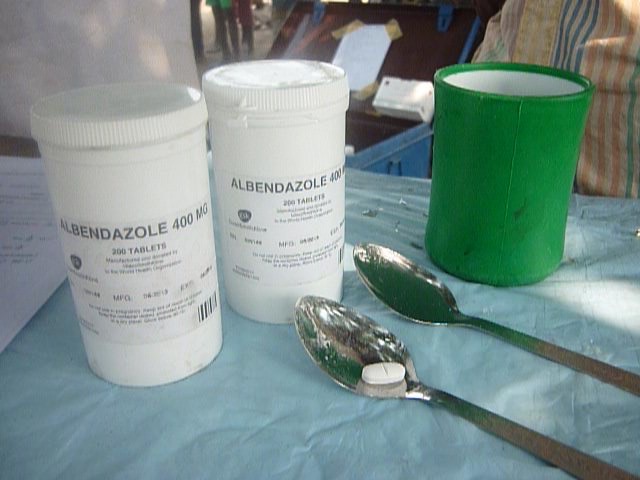 <p>The Starworms team is very proud to announce that Today, Friday the 2nd of August, a <a href="http://collections.plos.org/starworms" target="_blank">special collection of Starworms</a> is being published on the website of Plos Neglected Tropical Diseases.</p>
<p><img alt="" src="/src/Frontend/Files/userfiles/images/Screen%20Shot%202019-08-02%20at%2011_40_28.png" style="width: 500px; height: 664px;" /></p>
<p>The release of this collection coincides with the publication of two nice manuscripts describing the results of the work performed during Work Package 1 of the Starworms Project. The <a href="/src/Frontend/Files/userfiles/files/2019_Vlaminck%20etal_Therapeutic%20efficacy%20of%20ALB%20against%20STH%20in%20Children%20measured%20by%205%20diagnostic%20methods.pdf" target="_blank">first manuscript</a> focuses on the therapeutic efficacy of Albendazole as measured by single and duplicate Kato-Katz, Mini-FLOTAC, FECPAKG2 and qPCR. The <a href="/src/Frontend/Files/userfiles/files/2019_Cools%20et%20al_Diagnostic%20performance%20of%20a%20diagnostic%20test%20to%20detect%20and%20quantify%20STH%20in%203%20endemic%20countries.pdf">second manuscript</a> evaluates the diagnostic efficacy of these 5 different diagnostics.</p>
<p>Two earlier published manuscripts on the <a href="/src/Frontend/Files/userfiles/files/2018_Vlaminck_Starworms%20protocol%20WP1.pdf" target="_blank">Starworms Work Package 1 protocol</a> and the <a href="/src/Frontend/Files/userfiles/files/2018_Ayana%26Vlaminck%20et%20al_FecPakG2%20human%20protocol.pdf" target="_blank">FECPAKG2 method</a> are also included in the collection at this time.</p>
<p>We are looking forward to expand this collection very soon with a number of additional manuscript of importance to the STH community.</p>
<p>Happy reading!</p>
<p>The Starworms Team.</p>
<p>Bruno, Piet and Johnny</p>
<p> </p>
<p>The Starworms team is very proud to announce that Today, Friday the 2nd of August, a <a href="http://collections.plos.org/starworms" target="_blank">special collection of Starworms</a> is being published on the website of Plos Neglected Tropical Diseases.</p>
<p><img alt="" src="/src/Frontend/Files/userfiles/images/Screen%20Shot%202019-08-02%20at%2011_40_28.png" style="width: 500px; height: 664px;" /></p>
<p>The release of this collection coincides with the publication of two nice manuscripts describing the results of the work performed during Work Package 1 of the Starworms Project. The <a href="/src/Frontend/Files/userfiles/files/2019_Vlaminck%20etal_Therapeutic%20efficacy%20of%20ALB%20against%20STH%20in%20Children%20measured%20by%205%20diagnostic%20methods.pdf" target="_blank">first manuscript</a> focuses on the therapeutic efficacy of Albendazole as measured by single and duplicate Kato-Katz, Mini-FLOTAC, FECPAKG2 and qPCR. The <a href="/src/Frontend/Files/userfiles/files/2019_Cools%20et%20al_Diagnostic%20performance%20of%20a%20diagnostic%20test%20to%20detect%20and%20quantify%20STH%20in%203%20endemic%20countries.pdf">second manuscript</a> evaluates the diagnostic efficacy of these 5 different diagnostics.</p>
<p>Two earlier published manuscripts on the <a href="/src/Frontend/Files/userfiles/files/2018_Vlaminck_Starworms%20protocol%20WP1.pdf" target="_blank">Starworms Work Package 1 protocol</a> and the <a href="/src/Frontend/Files/userfiles/files/2018_Ayana%26Vlaminck%20et%20al_FecPakG2%20human%20protocol.pdf" target="_blank">FECPAKG2 method</a> are also included in the collection at this time.</p>
<p>We are looking forward to expand this collection very soon with a number of additional manuscript of importance to the STH community.</p>
<p>Happy reading!</p>
<p>The Starworms Team.</p>
<p>Bruno, Piet and Johnny</p>
<p> </p>
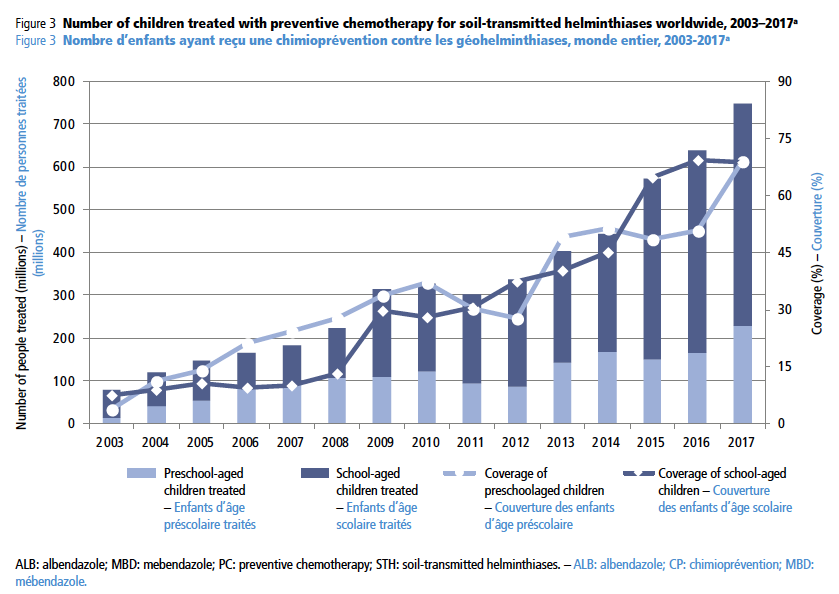 <p>The 2017 treatment coverage levels for soil-transmitted helminths and <em>Schistosoma</em> have recently been published. Find the original report <a href="/src/Frontend/Files/userfiles/files/2018_WHO_WER_number%20of%20people%20treated%20in%202017.pdf" target="_blank">Here</a>.</p>
<p>In the year 2017, globally, 72.7% of the 3452 implementation units reached an effective coverage of >75%, reaching a total global coverage of 69%. For Pre-School Aged Children, a global coverage of 69% was reached. For School Aged Children, global levels of coverage were 68.8%. The presented numbers show a significant improvement in coverage, in line with the NTD road map targets for 2020.</p>
<p>However, it is of note that the current NTD road map does not target adults at risk for Schistosoma or women of childbearing age for STH. As a result, PC coverage rates for those groups are very low because the drugs are not donated. This is a challenge that should be addressed in the future.</p>
<p>Lets keep up the good work!</p>
<p>The 2017 treatment coverage levels for soil-transmitted helminths and <em>Schistosoma</em> have recently been published. Find the original report <a href="/src/Frontend/Files/userfiles/files/2018_WHO_WER_number%20of%20people%20treated%20in%202017.pdf" target="_blank">Here</a>.</p>
<p>In the year 2017, globally, 72.7% of the 3452 implementation units reached an effective coverage of >75%, reaching a total global coverage of 69%. For Pre-School Aged Children, a global coverage of 69% was reached. For School Aged Children, global levels of coverage were 68.8%. The presented numbers show a significant improvement in coverage, in line with the NTD road map targets for 2020.</p>
<p>However, it is of note that the current NTD road map does not target adults at risk for Schistosoma or women of childbearing age for STH. As a result, PC coverage rates for those groups are very low because the drugs are not donated. This is a challenge that should be addressed in the future.</p>
<p>Lets keep up the good work!</p>
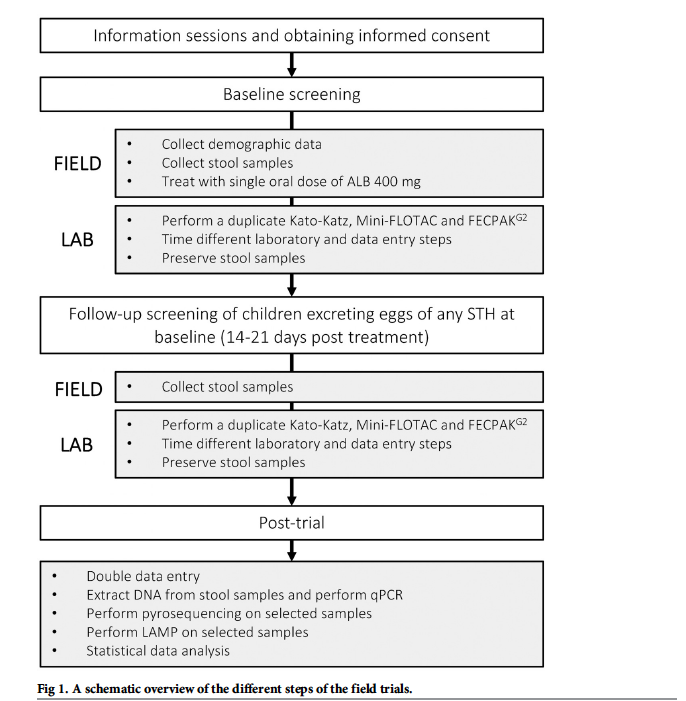 <p><img alt="" src="/src/Frontend/Files/userfiles/images/Screen%20Shot%202018-11-21%20at%2009_36_18.png" style="width: 895px; height: 478px;" /></p>
<p> </p>
<p>The official protocol on the first workpackage of the Starworms project is now published in <strong>PlosNTD</strong>.</p>
<p>In this protocol paper we delve deeper into the why and how of the starworms project and we discuss the approach and plan of analysis for the first work package of this project. It is an excellent work of reference since it<strong> includes</strong> many of <strong>our standard operating protocols </strong>and project record forms.</p>
<p><strong>Download your copy</strong> by clicking on this link:</p>
<p><a class="btn--red" href="/src/Frontend/Files/userfiles/files/2018_Vlaminck_Starworms%20protocol%20WP1.pdf" target="_blank">STARWORMS WP1 PROTOCOL</a></p>
<p><img alt="" src="/src/Frontend/Files/userfiles/images/Screen%20Shot%202018-11-21%20at%2009_36_18.png" style="width: 895px; height: 478px;" /></p>
<p> </p>
<p>The official protocol on the first workpackage of the Starworms project is now published in <strong>PlosNTD</strong>.</p>
<p>In this protocol paper we delve deeper into the why and how of the starworms project and we discuss the approach and plan of analysis for the first work package of this project. It is an excellent work of reference since it<strong> includes</strong> many of <strong>our standard operating protocols </strong>and project record forms.</p>
<p><strong>Download your copy</strong> by clicking on this link:</p>
<p><a class="btn--red" href="/src/Frontend/Files/userfiles/files/2018_Vlaminck_Starworms%20protocol%20WP1.pdf" target="_blank">STARWORMS WP1 PROTOCOL</a></p>
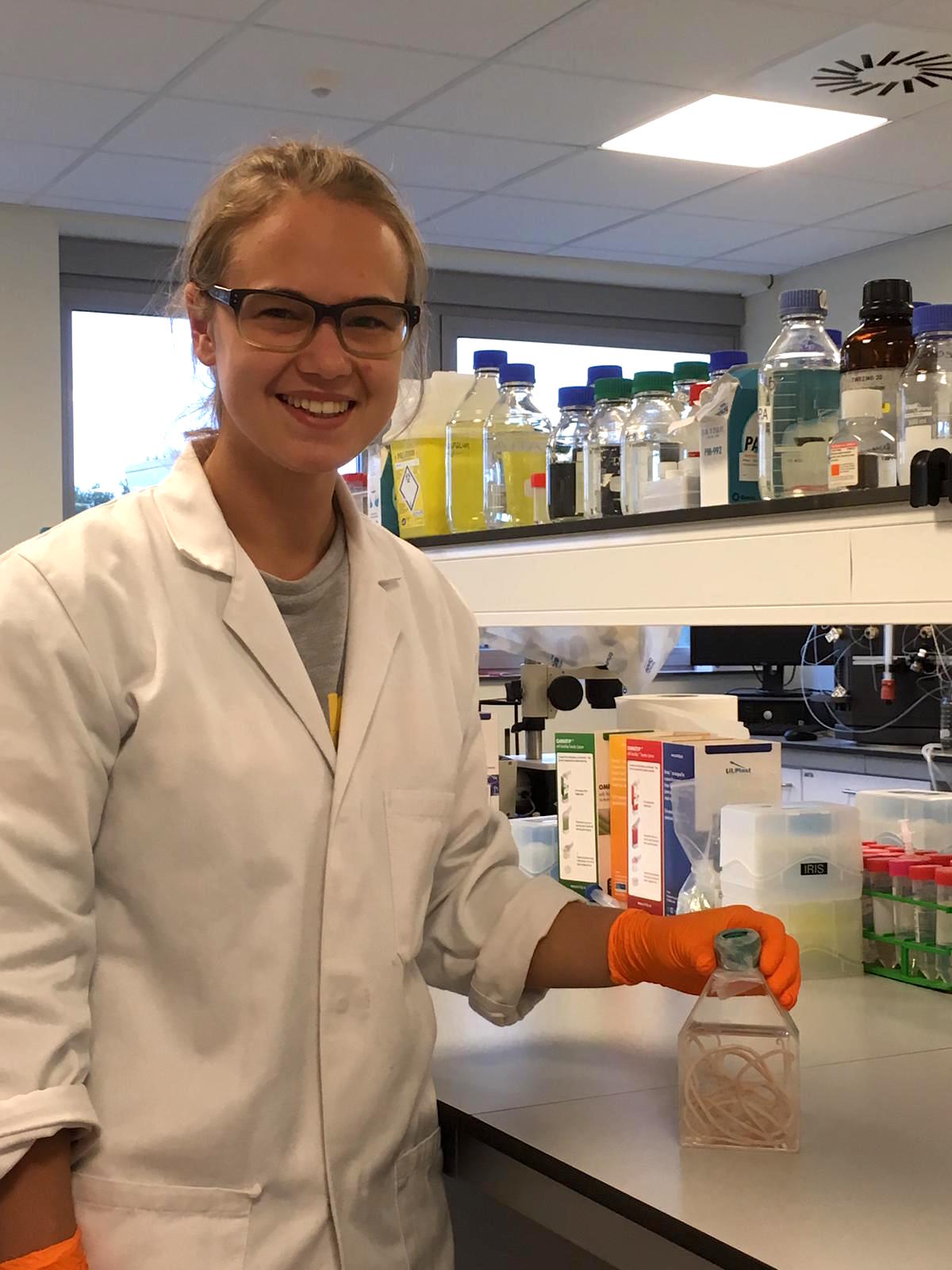 <p>Sara Roose, a student in the lab of parasitology recently won a prize for producing the best Master thesis of her year.</p>
<p>Sara Roose, a student in the lab of parasitology recently won a prize for producing the best Master thesis of her year.</p>
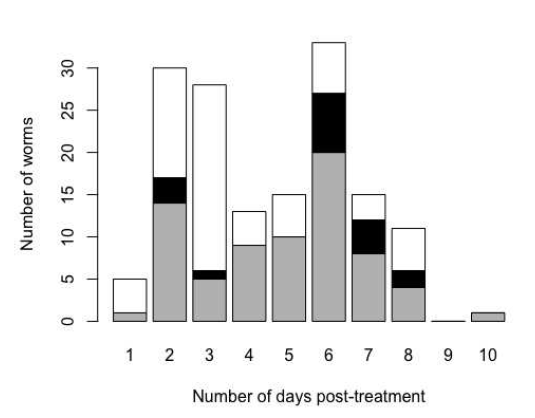 <p>Last year, Krücken et al. published an interesting paper titled: "Reduced efficacy of albendazole against <em>Ascaris lumbricoides</em> in Rwandan schoolchildren." in the international journal for Parasitology: Drugs and Drug Resistance. (original article <a href="/src/Frontend/Files/userfiles/files/2017_Krucken%20et%20al_Reduced%20efficacy%20of%20albendawole%20against%20Ascaris%20lumbricoides%20in%20Rwanda.pdf" target="_blank">Here</a>). The article mentions the results of a drug efficacy trial with a single dose of 400mg Albendazole (ALB) in 12 schools in Rwanda where <em>Ascaris</em> is the predominant STH infection. An overall reduced cure rate (70%) and fecal egg count reduction rate (75%) was reported. Nevertheless, no putative benzimidazole-resistance associated polymorphisms were detected in 4 of the <em>Ascaris</em> B-tubulin isotype genes examined. Given these results, the authors claimed suspicion of ALB resistance in these <em>Ascaris</em> populations.</p>
<p>Upon deeper evaluation of the data collected and provided in this paper an important methodological issue came to light that could provide a more straightforward explanation as to why a reduction in effecacy and cure rates were observed. The authors namely reported that the post-treatment examination was performed between 7 and 10 days after the treatment with ALB. At that time, complete expulsion of adult worms and/or parasite eggs can however not be ensured and would likely lead to misleading conclusions regarding drug efficacy.</p>
<p>Although the time point at which post-treatment samples are collected is crucial to readily interpret the drug efficacy, empirical evidence for the optimal timing of post-treatment sampling remains scarce for all STHs. In this light, Levecke et al. followed with the publication of the results of an expulsion study performed by Easton and colleagues in 19 Kenyan individuals treated with ALB. (Find paper <a href="/src/Frontend/Files/userfiles/files/2018_Levecke%20et%20al_Optimal%20time%20of%20post%20treatment%20sampling%20for%20Ascaris.pdf">HERE</a>) There it was apparant that <strong>it takes up to 10 days for all infected individuals to clear the adult worm load</strong> and that approximately 20% of all worms is being expelled between day 7 and 10 post treatment.</p>
<p class="img-caption"><img alt="" src="/src/Frontend/Files/userfiles/images/Screen%20Shot%202018-06-29%20at%2014_03_21.png" style="width: 600px; height: 469px;" /></p>
<p class="caption">The barplot represents the number of adult <em>Ascaris</em> worms recovered from 21 Kenyan patients treated on day 0 with 400mg Albendazole over a time span of 10 days post treatment (white: female; black:male and grey: unknown sex)</p>
<p>Based on these findings, it is recommended to <strong>wait at least 14 days after an ALB treatment before conducting follow-up egg count</strong>s.Any sampling performed before this time point may result in biased ERR estimates, due to release of residual eggs from moridund or degenerating worms.</p>
<p> </p>
<p>Last year, Krücken et al. published an interesting paper titled: "Reduced efficacy of albendazole against <em>Ascaris lumbricoides</em> in Rwandan schoolchildren." in the international journal for Parasitology: Drugs and Drug Resistance. (original article <a href="/src/Frontend/Files/userfiles/files/2017_Krucken%20et%20al_Reduced%20efficacy%20of%20albendawole%20against%20Ascaris%20lumbricoides%20in%20Rwanda.pdf" target="_blank">Here</a>). The article mentions the results of a drug efficacy trial with a single dose of 400mg Albendazole (ALB) in 12 schools in Rwanda where <em>Ascaris</em> is the predominant STH infection. An overall reduced cure rate (70%) and fecal egg count reduction rate (75%) was reported. Nevertheless, no putative benzimidazole-resistance associated polymorphisms were detected in 4 of the <em>Ascaris</em> B-tubulin isotype genes examined. Given these results, the authors claimed suspicion of ALB resistance in these <em>Ascaris</em> populations.</p>
<p>Upon deeper evaluation of the data collected and provided in this paper an important methodological issue came to light that could provide a more straightforward explanation as to why a reduction in effecacy and cure rates were observed. The authors namely reported that the post-treatment examination was performed between 7 and 10 days after the treatment with ALB. At that time, complete expulsion of adult worms and/or parasite eggs can however not be ensured and would likely lead to misleading conclusions regarding drug efficacy.</p>
<p>Although the time point at which post-treatment samples are collected is crucial to readily interpret the drug efficacy, empirical evidence for the optimal timing of post-treatment sampling remains scarce for all STHs. In this light, Levecke et al. followed with the publication of the results of an expulsion study performed by Easton and colleagues in 19 Kenyan individuals treated with ALB. (Find paper <a href="/src/Frontend/Files/userfiles/files/2018_Levecke%20et%20al_Optimal%20time%20of%20post%20treatment%20sampling%20for%20Ascaris.pdf">HERE</a>) There it was apparant that <strong>it takes up to 10 days for all infected individuals to clear the adult worm load</strong> and that approximately 20% of all worms is being expelled between day 7 and 10 post treatment.</p>
<p class="img-caption"><img alt="" src="/src/Frontend/Files/userfiles/images/Screen%20Shot%202018-06-29%20at%2014_03_21.png" style="width: 600px; height: 469px;" /></p>
<p class="caption">The barplot represents the number of adult <em>Ascaris</em> worms recovered from 21 Kenyan patients treated on day 0 with 400mg Albendazole over a time span of 10 days post treatment (white: female; black:male and grey: unknown sex)</p>
<p>Based on these findings, it is recommended to <strong>wait at least 14 days after an ALB treatment before conducting follow-up egg count</strong>s.Any sampling performed before this time point may result in biased ERR estimates, due to release of residual eggs from moridund or degenerating worms.</p>
<p> </p>
